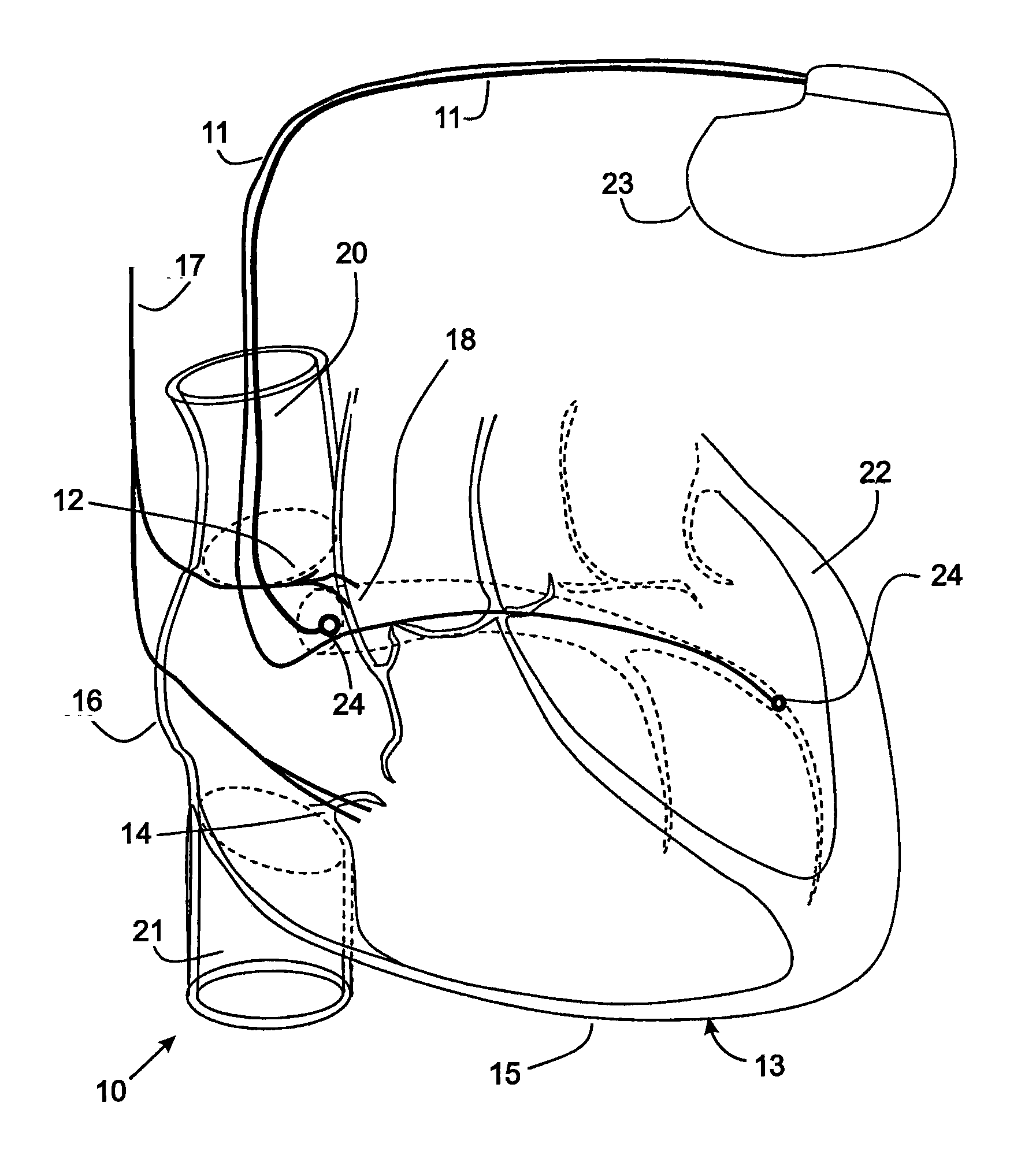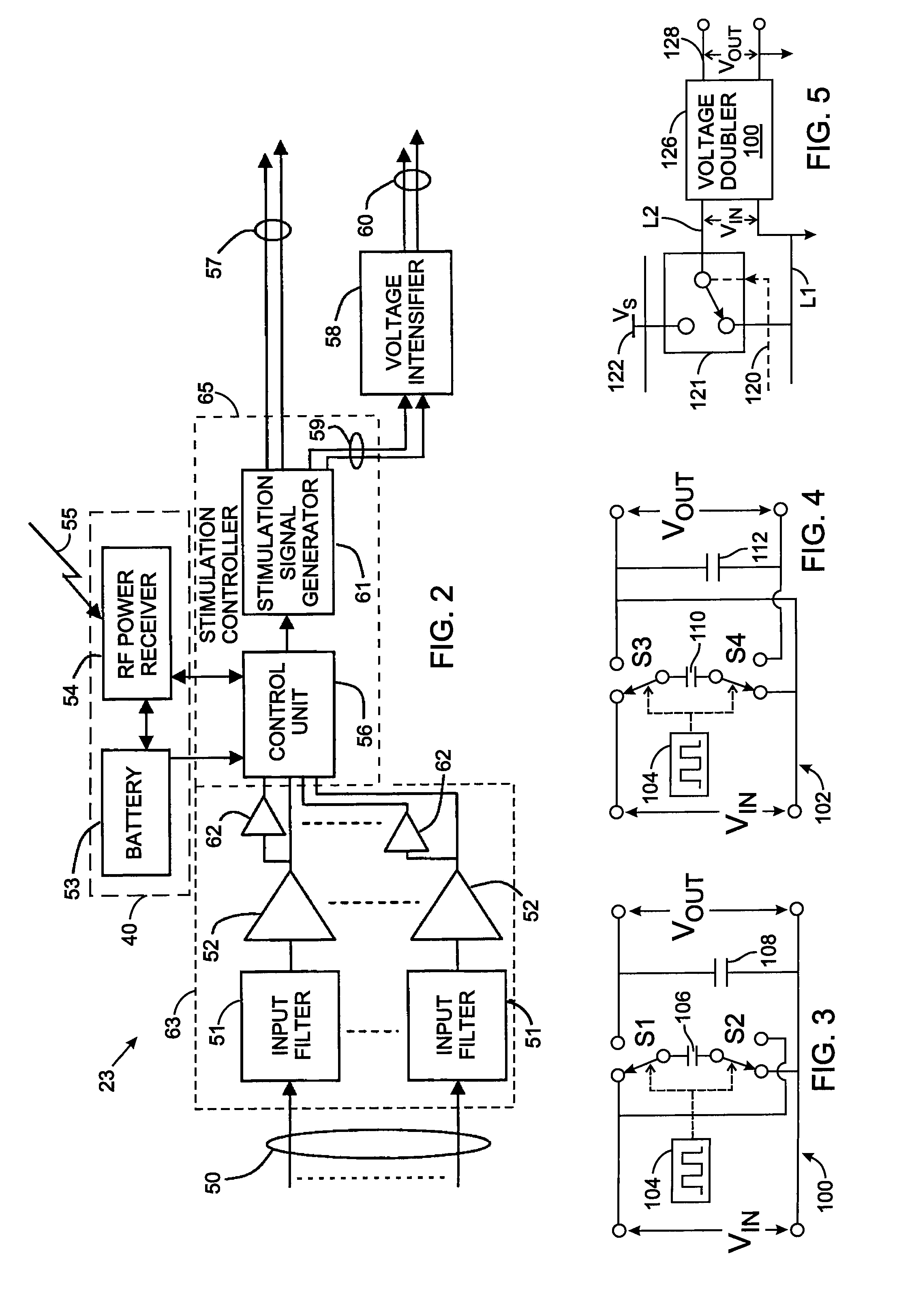Implantable digital device for tissue stimulation
a digital device and tissue stimulation technology, applied in the field of implantable medical devices, can solve the problems of heart failure patients not being able to exert themselves, the heart keeps working, and the “failing” heart cannot work as efficiently, so as to minimize the loss
- Summary
- Abstract
- Description
- Claims
- Application Information
AI Technical Summary
Benefits of technology
Problems solved by technology
Method used
Image
Examples
Embodiment Construction
[0041]Although the present invention is being initially described in the context of cardiac pacing by implanting an intravascular radio frequency energy powered stimulator, the present apparatus comprising of a highly efficient stimulator with digital output, can be employed to stimulate one or more other areas of the human body as shown in subsequent descriptions and examples. Electrodes of the stimulator may be implanted in a vein or artery of the heart or it may be embedded in cardiac muscle or skeletal muscle. The stimulator may be configured to deliver treatment in the form of stimulation of the autonomous system, such as the cardiac vagal nerve for the purpose of heart rate control. In addition to cardiac applications, the stimulation apparatus can provide brain stimulation, for treatment of Parkinson's disease or obsessive / compulsive disorder for example. The electrical stimulation also may be applied to muscles, the spine, the gastro / intestinal tract, the pancreas, and the s...
PUM
 Login to View More
Login to View More Abstract
Description
Claims
Application Information
 Login to View More
Login to View More - R&D
- Intellectual Property
- Life Sciences
- Materials
- Tech Scout
- Unparalleled Data Quality
- Higher Quality Content
- 60% Fewer Hallucinations
Browse by: Latest US Patents, China's latest patents, Technical Efficacy Thesaurus, Application Domain, Technology Topic, Popular Technical Reports.
© 2025 PatSnap. All rights reserved.Legal|Privacy policy|Modern Slavery Act Transparency Statement|Sitemap|About US| Contact US: help@patsnap.com



